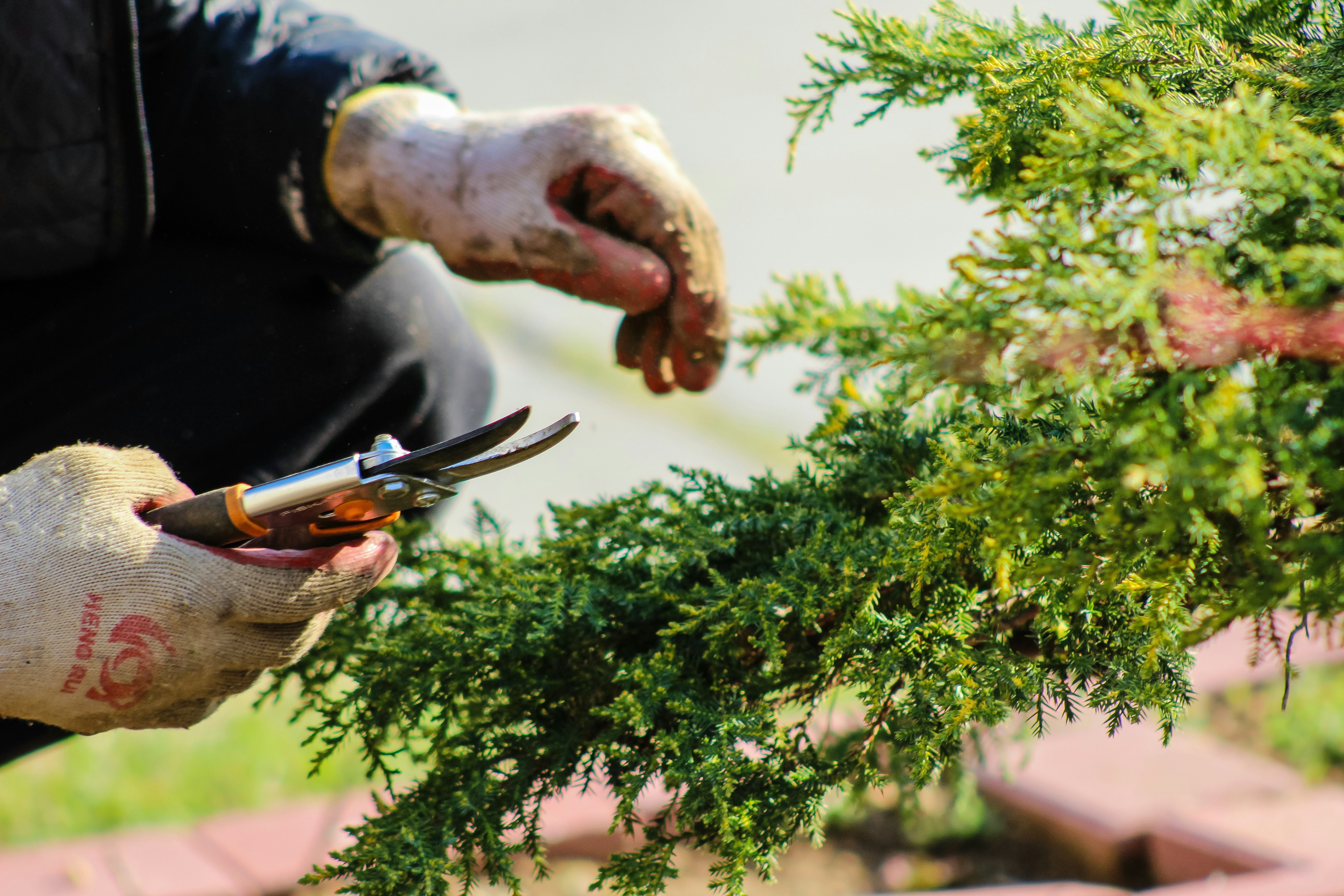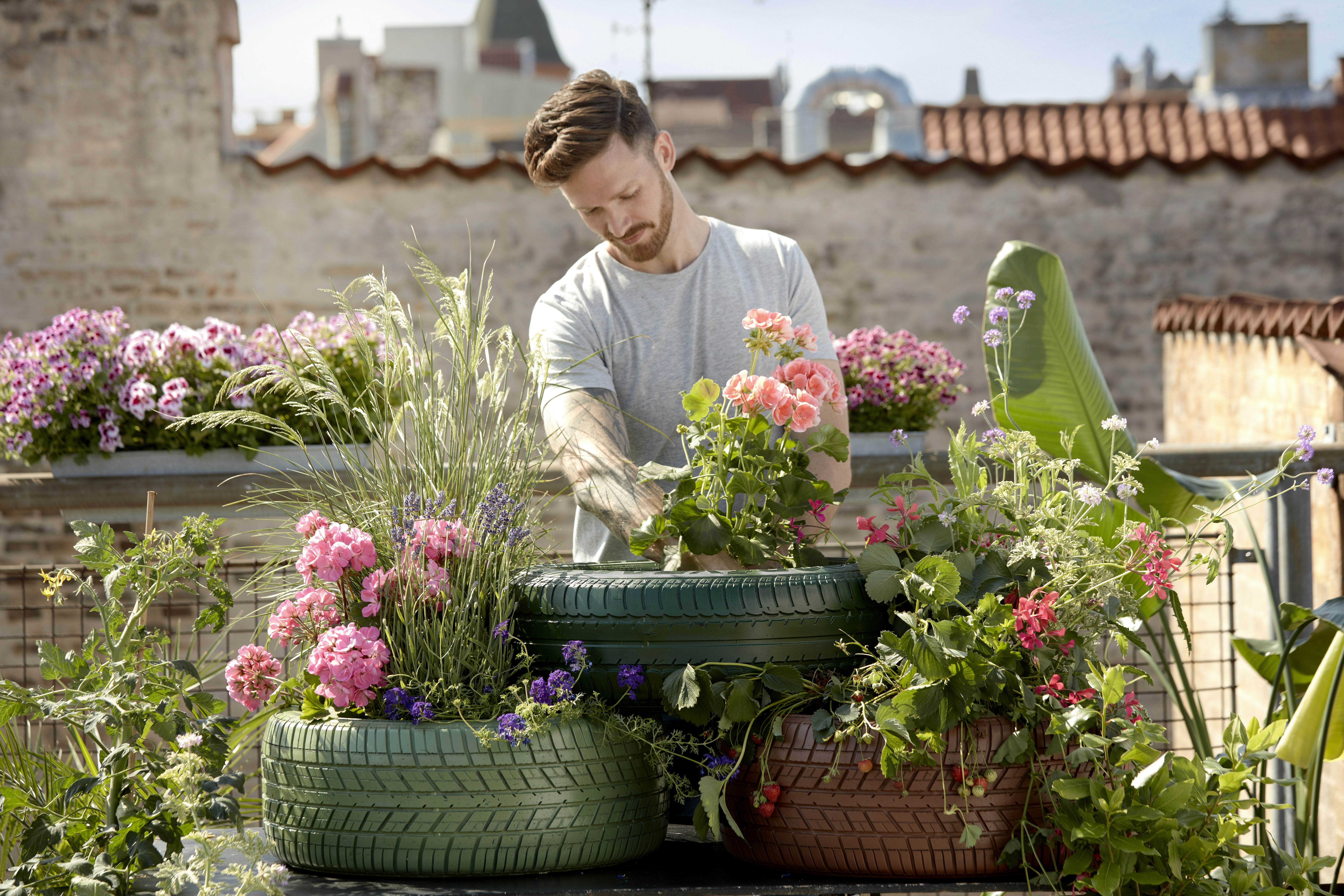Are you looking to enhance the fertility and overall health of the soil in your garden? If you’re wondering how you can improve the soil quality in your own backyard oasis, you’ve come to the right place. Whether you’re a seasoned gardener or just beginning to explore the world of horticulture, understanding how to nourish the soil is key to achieving thriving plants and vibrant flowers. By implementing a few simple techniques and making some thoughtful choices, you can transform your garden’s soil into a nutrient-rich haven that will support the growth of your favorite plants. Let’s explore some effective methods to boost your soil quality and create an optimal environment for your beloved garden.
Importance of Soil Quality
Soil quality is of utmost importance when it comes to ensuring successful gardening and plant growth. The quality of the soil directly affects the health and vigor of your plants, as it provides the necessary nutrients, water, and support that they need to grow and thrive. Understanding soil composition, its effects on plant growth, and recognizing signs of poor soil quality are crucial for any gardener looking to achieve optimal results.
Understanding Soil Composition
Understanding the composition of soil is fundamental to improving its quality. Soil is made up of various components, including minerals, organic matter, water, and air. The mineral particles in soil, such as sand, silt, and clay, determine its texture. Organic matter, which includes decomposed plant material and other organic substances, contributes to soil fertility and moisture retention. Adequate water and air pockets are essential for healthy root development and overall plant growth.
Effects of Soil Quality on Plant Growth
The quality of the soil has a direct impact on the overall health and growth of plants. Soil provides essential nutrients that plants need for growth, including nitrogen, phosphorus, and potassium, as well as micronutrients like iron and zinc. These nutrients are absorbed through the plant’s roots, so the presence and availability of these nutrients in the soil are crucial for plant health. Additionally, soil quality affects water retention and drainage, which can directly impact plant hydration and root health. pH levels in the soil also play a role in nutrient availability to plants.
Signs of Poor Soil Quality
Recognizing signs of poor soil quality is vital for taking appropriate steps to improve it. These signs may include slow or stunted plant growth, yellowing or discolored leaves, wilting, poor fruit or flower production, and increased susceptibility to pests and diseases. Compacted soil, excessive runoff or pooling of water, and rapid drying out of soil are also indicators of poor soil quality. By paying attention to these signs, you can assess the state of your soil and take action to rectify any issues.
Assessing Soil Quality
To enhance the quality of your garden soil, it is crucial to assess its current condition and identify areas for improvement. Soil testing is a valuable tool in determining the composition and health of your soil. There are various soil testing kits available, or you can send a sample to a professional laboratory for a comprehensive analysis. Soil testing provides valuable information on nutrient levels, pH, and organic matter content, allowing you to make informed decisions about soil amendments.
Soil Testing
Soil testing involves collecting a representative sample of your garden soil and analyzing it for various properties. This process typically includes measuring nutrient levels, understanding the pH level, estimating organic matter content, and evaluating the soil’s texture. Soil testing kits often provide easy-to-follow instructions, allowing you to gather soil samples accurately. Once you have the test results, you can interpret them to understand the current state of your soil and prioritize necessary amendments.
Interpreting Soil Test Results
Interpreting soil test results is a crucial step in understanding your soil’s needs. The report will provide information on nutrient levels, pH, and organic matter content. Nutrient levels are typically presented as a recommended range, and you can compare them to the actual results from your soil sample. If nutrient levels are inadequate, you may need to incorporate specific fertilizers or amendments to address deficiencies. pH levels indicate soil acidity or alkalinity, and suitable amendments can be made accordingly. Organic matter content determines the soil’s fertility and ability to retain water, so you can adjust organic matter inputs based on the test results.
Identifying Soil Texture
Understanding the texture of your soil is essential for managing its water-holding capacity and drainage. Soil texture refers to the relative proportion of sand, silt, and clay in the soil. Sandy soil has larger particles and tends to drain quickly, while clay soil has smaller particles and retains water more effectively. A loamy soil, with a balanced mixture of sand, silt, and clay, is generally considered ideal for most plants. You can easily determine your soil’s texture by performing a simple test involving a jar, water, and soil samples. Once you know your soil’s texture, you can tailor your irrigation and amendment practices accordingly.
Amending Soil
Amending soil is the practice of improving its structure, fertility, and overall quality through the addition of various organic and inorganic materials. By adding organic matter, composting, vermicomposting, and utilizing cover crops, you can enhance the fertility, structure, and moisture retention of your soil.
Adding Organic Matter
Adding organic matter to your soil is one of the most effective ways to improve its quality. Organic matter includes materials such as compost, shredded leaves, aged manure, and kitchen scraps. These materials provide essential nutrients to plants, enhance soil structure, and improve water retention. Incorporating organic matter into the soil can also increase beneficial microbial activity, leading to healthier plant growth.
Composting and Vermicomposting
Composting is the process of decomposing organic waste into nutrient-rich compost. By composting kitchen scraps, yard waste, and other organic materials, you can produce a valuable soil amendment. Vermicomposting, on the other hand, involves using worms to break down organic matter, resulting in nutrient-rich vermicompost. Both composting methods contribute to soil health and can be used to amend garden beds, potting mixes, and raised beds.
Using Cover Crops
Cover crops are plants grown specifically to improve soil quality and provide other benefits. They are typically planted during fallow periods or as a winter cover to protect the soil from erosion and nutrient loss. Cover crops help suppress weeds, improve soil structure, add organic matter, and fix nitrogen from the atmosphere into the soil. Popular cover crops include legumes like clover and vetch, grains like rye and oats, and brassicas like radishes and mustards.
Balancing Soil pH
Soil pH refers to the measurement of acidity or alkalinity in the soil. Different plants have specific pH preferences, and maintaining an appropriate pH level is vital for optimal nutrient availability. Understanding soil pH, adjusting it as necessary, and choosing plants suitable for the existing pH conditions are crucial steps in balancing soil pH.
Understanding Soil pH
Soil pH is measured on a scale ranging from acidic (pH less than 7) to alkaline (pH greater than 7), with a pH of 7 being considered neutral. Most plants prefer slightly acidic to neutral soil, with a pH range of 6 to 7.5. Acidic soil (pH below 6) may require amendments to raise the pH, while alkaline soil (pH above 7.5) may need amendments to lower the pH. Maintaining the appropriate pH range ensures optimal nutrient availability to the plants.
Adjusting Soil pH
Adjusting soil pH involves adding amendments to increase or decrease the acidity or alkalinity of the soil. For acidic soil, incorporating materials like limestone, wood ash, or dolomite lime can raise the pH. Sulfur, aluminum sulfate, or iron sulfate can be used to lower the pH of alkaline soil. The amount and type of amendment required depend on the current pH level and the desired range. It’s important to follow guidelines and recommendations specific to your plants and soil conditions when adjusting pH.

Plants and Soil pH
Different plants have different pH preferences, and understanding these preferences can help you choose the right plants for your garden. Acid-loving plants like azaleas, blueberries, and rhododendrons thrive in acidic soil, while alkaline-loving plants like yarrow, lavender, and lilacs prefer more alkaline conditions. Most vegetables and ornamental plants can tolerate a neutral pH range. By aligning your plant selection with your soil’s natural pH or adjusting the pH to suit your desired plants, you can optimize their growth and health.
Improving Soil Drainage
Proper soil drainage is essential for plant health, as it ensures that excess water can freely drain away from the root zone. Identifying drainage issues, addressing problems, and installing drainage systems can help optimize soil drainage.
Identifying Drainage Issues
Poor soil drainage can lead to waterlogged soil, root suffocation, and a lack of oxygen for the plants. Signs of drainage issues include water pooling or standing on the soil surface, persistent wetness, and plant decline. Digging a test hole in the garden can help assess the soil’s drainage capacity and identify any underlying problems.
Addressing Drainage Problems
Addressing drainage problems may involve implementing appropriate soil amendments and landscaping techniques. Improving soil structure through organic matter additions can promote better drainage. Creating raised beds or mounds can also help improve drainage in areas with persistent wetness. Additionally, digging channels or installing French drains can redirect excess water away from the garden.
Installing Drainage Systems
In more severe cases, installing drainage systems may be necessary to alleviate chronic drainage problems. French drains, surface drains, or subsurface drains can be used to collect and direct excess water away from the planting area. Professional assistance may be required for designing and installing drainage systems, depending on the complexity of the problem.

Preventing Erosion
Erosion is the process of soil being washed away or worn down by the forces of wind, water, or other external factors. Preventing erosion is crucial for maintaining soil integrity, preventing nutrient loss, and preserving the overall health of your garden.
Recognizing Erosion Risks
Recognizing the risks of erosion is the first step in preventing it. Some common risk factors include steep slopes, bare soil surfaces, lack of vegetative cover, and heavy rain or wind. These factors increase the likelihood of soil erosion, leading to nutrient depletion, reduced soil quality, and an unstable gardening environment.
Implementing Erosion Control Measures
Implementing erosion control measures is essential for mitigating the risks and minimizing erosion. Planting groundcover plants, such as grasses or low-growing shrubs, can help stabilize soil and prevent erosion on slopes. Mulching bare soil surfaces with organic mulch or installing erosion control blankets can also provide protection against erosion. Additionally, using retaining walls, terracing, or contouring techniques can help divert and slow down water runoff, reducing erosion.
Contouring and Terracing
Contouring and terracing are effective methods for preventing erosion on sloped landscapes. Contouring involves creating level garden beds along the contours of the land, perpendicular to the slope. This technique slows down water runoff and encourages water infiltration, reducing erosion. Terracing involves constructing a series of level platforms or steps on a slope, creating flat surfaces for planting. By breaking up the slope, terracing reduces the force of water runoff and prevents erosion.
Controlling Pests and Diseases
Pests and diseases can wreak havoc on your garden, damaging plants and diminishing overall productivity. Implementing measures to promote beneficial insects, practicing crop rotation, and using organic pest and disease management strategies can help minimize the impact of pests and diseases in your garden.

Promoting Beneficial Insects
Encouraging beneficial insects, such as ladybugs, praying mantises, and lacewings, can naturally control pest populations in your garden. These beneficial insects feed on harmful pests, reducing the need for chemical pesticides. Planting diverse flowering plants and providing appropriate habitats, such as flowering herbs and plants that provide shelter, can attract and support beneficial insects.
Crop Rotation
Practicing crop rotation is an effective way to manage pests and diseases in your garden. Rotating crops by planting different plant families in different spots each year helps break pest and disease cycles. Certain pests and diseases have specific host plants, and by changing plant species or families, you can disrupt their life cycles and minimize their impact. It is essential to research which plants are appropriate for rotation and keep a record of the planting history to ensure successful implementation.
Organic Pest and Disease Management
Opting for organic pest and disease management methods reduces the reliance on chemical pesticides and promotes a healthier garden ecosystem. Organic practices include using organic-approved pest control products, such as neem oil or insecticidal soaps, practicing good garden hygiene by removing diseased plant material promptly, and employing physical barriers like floating row covers to protect plants from pests. Regular monitoring and early intervention are essential when using organic methods to manage pests and diseases.
Watering Techniques
Watering your garden properly is essential for plant health and growth. By choosing the right irrigation method, determining watering frequency and timing, and avoiding overwatering, you can ensure optimal hydration and prevent water-related issues in your garden.
Choosing the Right Irrigation Method
Choosing the appropriate irrigation method depends on various factors, including plant needs, garden size, water availability, and efficiency. Common irrigation methods include hand watering, sprinklers, drip irrigation, and soaker hoses. Hand watering allows for precise targeting of plant roots but can be labor-intensive for larger areas. Sprinklers are suitable for larger garden spaces but may result in water loss due to evaporation. Drip irrigation and soaker hoses provide slow, targeted watering directly to the plant roots, minimizing water waste and evaporation.
Watering Frequency and Timing
Determining the ideal watering frequency and timing depends on factors like plant type, weather conditions, and soil moisture levels. As a general guideline, it’s essential to water deeply and infrequently, allowing the soil to dry out slightly between watering sessions. Avoiding overwatering, which can suffocate plant roots and lead to root rot, is crucial. Watering early in the morning or late in the afternoon allows for adequate absorption before the heat of the day, minimizing water loss through evaporation.
Avoiding Overwatering
Overwatering is a common mistake that can harm plants and negatively impact soil quality. Signs of overwatering include waterlogged soil, wilting despite adequate moisture, yellowing leaves, and increased susceptibility to root diseases. To avoid overwatering, it’s important to monitor soil moisture levels, adjust watering frequency based on weather conditions, and ensure proper drainage. Properly amended soil with adequate organic matter helps improve soil drainage and prevent waterlogging.
Mulching
Mulching is the practice of applying a protective layer of organic or inorganic material on the soil surface. It offers numerous benefits, including moisture retention, weed suppression, temperature regulation, and soil insulation. By understanding the benefits of mulching, choosing the right type of mulch, and properly applying and maintaining it, you can enhance your soil quality and promote healthier plant growth.
Benefits of Mulching
Mulching provides multiple benefits for your garden. It acts as a protective layer, reducing soil erosion caused by wind and water. Mulch helps retain moisture, preventing excessive evaporation and reducing the need for frequent watering. It also suppresses weed growth by blocking sunlight and preventing weed seeds from reaching the soil surface. Mulching insulates the soil, regulating temperatures and reducing extreme fluctuations. Additionally, organic mulches break down over time, adding valuable organic matter to the soil and enhancing its fertility.
Types of Mulch
Various types of mulch are available, and choosing the right one depends on your garden’s needs and aesthetics. Organic mulches, such as wood chips, straw, and leaves, provide additional benefits as they decompose and improve soil structure. Inorganic mulches, like gravel and landscape fabric, offer long-lasting weed suppression and erosion control. It’s important to consider factors such as water permeability, availability, cost, and plant compatibility when selecting the appropriate mulch for your garden.
Applying and Maintaining Mulch
Applying mulch correctly is essential to reap its full benefits. Start by removing any weeds or debris from the soil surface before spreading mulch. Apply a layer of mulch around 2 to 4 inches thick, ensuring that it covers the entire rootzone of plants. Take care not to pile mulch against plant stems, as this can encourage rot and disease. Regularly monitor the mulch layer to check for compaction, mold growth, or nutrient depletion. Adding additional mulch as needed and periodically fluffing or turning the mulch helps maintain its effectiveness.
Maintaining Soil Health
Maintaining soil health is an ongoing process that involves avoiding harmful chemicals and pesticides, regularly monitoring soil conditions, and implementing practices like cover cropping and crop rotation.
Avoiding Chemicals and Pesticides
Using chemical pesticides and herbicides can harm beneficial organisms in the soil and disrupt the natural balance of the ecosystem. It is advisable to adopt organic gardening practices and opt for natural pest control methods whenever possible. Biological controls, such as handpicking pests, introducing beneficial insects, and using organic-approved pest control products, help preserve soil health and protect the environment.
Regular Soil Monitoring
Regularly monitoring soil conditions is crucial for maintaining soil health. This includes observing plant growth and health, checking for signs of nutrient deficiencies or excesses, and assessing soil moisture levels. Conducting periodic soil tests can help identify any nutrient imbalances or pH issues that may require attention. By staying vigilant and addressing any soil-related problems promptly, you can maintain a healthy and productive garden.
Cover Crops and Crop Rotation
Cover cropping and crop rotation are two effective practices for maintaining soil health and fertility. Cover crops, such as legumes, grasses, or brassicas, are planted during fallow periods or in between main crops to protect and nourish the soil. They provide organic matter, fix nitrogen, suppress weeds, and prevent erosion. Crop rotation involves systematically changing the plant species or families in specific areas of the garden to minimize pest and disease problems, break nutrient cycles, and optimize soil health.
By incorporating these practices into your gardening routine, you can improve the quality of your soil and create an environment that supports robust plant growth and overall garden success. Remember to pay attention to soil composition, assess soil quality through testing and observation, amend the soil as needed, and implement practices that promote long-term soil health. With a little effort and care, you can cultivate a thriving garden with vibrant, healthy plants.



